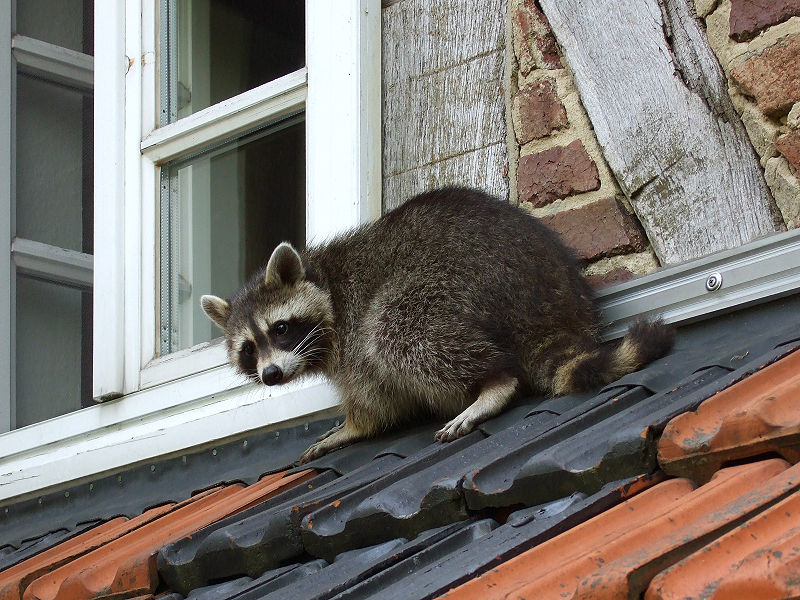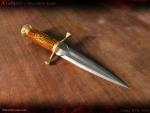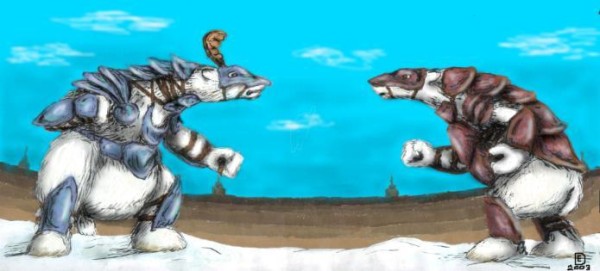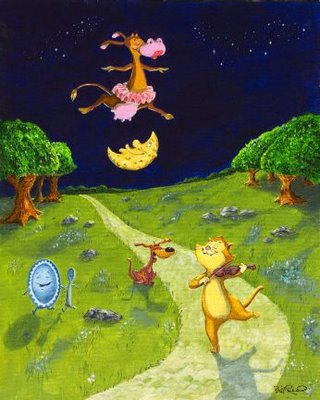Cannibalism and Children's Lit. Paper
Does Cannibalism Belong in Children’s Literature? -Ben Miller
In The Annotated Classic Fairy Tales, edited by Maria Tatar, there are nine stories, for children, which incorporate cannibalism in one way or another. In no particular order, cannibalistic fairy tales include Little Red Riding Hood, Hansel and Gretel, Perrault’s version of Sleeping Beauty, Snow White, The Juniper Tree, Jack and the Bean Stock, Tom Thumb, Vasilisa the Fair, and The Three Little Pigs. I repeat, these tales told to children contain cannibalistic elements and themes. Is this type of material suitable for children? Should kids be exposed to the idea of humans eating other humans at such a young age? With the help of two scholarly articles by Margret van Dijk and Tracy Willard, this paper will trace and investigate cannibalistic violence in classic fairy tales along with a human-eating passage in Philip Pullman’s trilogy His Dark Materials. With so much cannibalism prevalent throughout fairy tales, and literature in general, it’s not surprising there have been cases of murderers imitating cannibalistic rituals and actions they read about. Yet the majority of youths who grew up reading, or had read to them, children’s literature that contained cannibalism turn out fine, with no inclinations to murder and eat other people. But we’re still left with the question of whether or not this stuff is for children? What kind of values, fear, and anxieties does such literature instill? And is there really such a thing as children’s literature? As of right now I would say yes, this stuff, cannibalism, is for children, and there is such a thing as children’s literature – to an extent.
In Little Red Riding Hood the wolf eats granny and Little Red only to be killed, and probably eaten too, by the huntsman. The witch in Hansel and Gretel nearly cooks Hansel, for her reputation was that if “a child fell into her hands, she killed it, cooked it, and ate it. That meant a day of real feasting for her” (Tatar 54). Snow White’s evil stepmother hungrily devours what she thinks are the lungs and liver of Snow White with the expectation that Snow White’s beauty will seep into the stepmother with each bit of the organ. The giant Jack kills drools over the thought of the little boy broiled on toast and even has a chant to go along with his breakfast. Another evil stepmother in The Juniper Tree decapitates her husband’s son, tricks her own daughter into thinking she did it, lies about the boy’s death to his father, cooks the boy in a stew and feeds him to his dad who eats it all saying, “No one else can have any of it. Somehow I feel as if it’s all for me” (Tartar 165). Vasilisa the Fair is forced by her evil stepmother and sisters to go to Baba Yaba’s house, surrounded by human bones, for fire. In The Three Little Pigs we meet another wolf that eats two little pigs, after destroying their houses, and eventually is consumed by the third little pig, completing the circle. And in Tom Thumb another giant can ‘smell fresh meat’ and eats little children as ‘dainty morsels’ in ‘a tasty sauce.’
At first this seems a little disturbing: there is a lot of cannibalism going on here. As we begin to analyze and feast our minds on all this cannibalism, it’s obvious that the evil characters are the ones who execute the cannibalistic acts. And the children always outsmart or trick the predatory adult in pursuit. The cannibal’s role is to ‘signify danger and impending death’ as Willard summarizes in her criticism “Tales at the Border: Fairy Tales and Maternal Cannibalism.” Willard also points out the prominent pattern of feminine evil and female cannibalistic characters. Quoting Marina Warner, Willard reiterates, “In the most famous stories, monsters in female shape outnumber the giants and hobgoblins.” Willard herself is especially interested in maternal types of cannibalism such as Snow White’s evil stepmother and the witch who invites in Hansel and Gretel.
In her article “Horrid Warnings: Violence in Fairy Tales,” Margret van Dijk clearly analyzes the archetypes of good girls and bad girls and how fairy tales “reflect a social order where it is important to obey authority, to respect your elders, and to make an effort to survive.” The good girls are always the nice, pretty, and well-behaved children while the bag girls are usually ugly, mean, clever, and strong-willed (34). Bad girls relish money, pride, status, and reputation while good girls rely on family, love, equality, and respect. As expected the good girls are rewarded and the bad girls punished (34). One theme Dijk discusses that’s prevalent in cannibalistic stories is the series of tests or challenges a character must endure to succeed in not being eaten. Jack steals from the giant three times; Tom Thumb first talks his way out of death and then tricks the giant; and Vasilisa performs numerous chores and tests for Baba Yaba in order to maintain her status off the plate and receive her freedom. This goes to show that violence and cannibalism in fairy tales warns children, as Dijk quotes Bruno Bettelheim from his book The Uses of Enchantment, “That a struggle against severe difficulties in life is unavoidable, is an intrinsic part of human existence”.
Now that we have summarized cannibalism throughout fairy tales I want to focus on one tale, The Juniper Tree, and Pullman’s His Dark Materials. Towards the end of “The Subtle Knife” the faithful scout Lee Scoresby dies though not before he and his daemon fend off the Guard. In “The Amber Spyglass” the armored bear-king Iorek Byrnison reappears. After the witch Serafina fills him in on the worldly events in progress, Iorek yearns to see his dead friend. And once Iorek found Lee’s body he “began to feast on the flesh and blood of his old friend. It was his first meal for days and he was hungry” (577). While Iorek is eating Lee, “a complex web of thoughts was weaving itself into the bear-king’s mind, with more strands in it than hunger and satisfaction… Lyra… Silvertongue… agitation among the witches… alliances and war… new world… melting of the ice… vengeance “(577-578). This scene of cannibalism isn’t as evil; it involves friends, respect, nourishment, and life and death.
The cannibalism in The Juniper Tree isn’t good by any means, but what the boy’s sister does after dad finishes his meal is. The bones she takes to the tree disappear and the tree seems to give birth to a beautiful bird. This bird brings relief to little Marlene “because it seemed as if her brother were still alive” (Tatar 165). Marlene from The Juniper Tree and Iorek from His Dark Materials are characters that seem to resurrect the spirit of the dead character after cannibalistic acts take place. The boy’s bones disappear but a bird, a metaphor for his spirit or maybe daemon, is given life through his death. After Iorek eats his friend’s body he becomes even more involved in the spirit war and protecting Lyra, something that was especially important to Mr. Scoresby. Iorek appears to inherit attributes of Lee Scoresby and so in a metaphorical sense keeps Lee’s dust alive. Children’s literature with such scenes may suggest more optimistic resolutions from cannibalistic acts. Perhaps by devouring the body the spirit, or daemon, can be released or even consumed too. These types of cannibalistic scenarios elicit less horrific experiences of cannibalism; in fact they almost make cannibalism divine or another way to perceive supernatural spirits.
Back to fairy tales and a couple more connections. In both Jack and the Bean Stalk and Tom Thumb, Jack and Tom willingly offer themselves to be eaten. Jack says he “may as well be eaten as die of hunger” (136); and Tom Thumb offers himself and his siblings to the giantess, “we might as well be eaten by your husband” (261). These comments practically encourage kids to give into cannibalism because there may not be another alternative, or even a better one. Yet the children always use a good trick to evade their predator, which may unconsciously encourage kids to remember that trickery is always a good option to use to get out of danger. Another common archetype throughout cannibalistic literature is the apple. The apple is significant in The Juniper Tree and Snow White where it is used as a weapon. In The Juniper Tree the evil stepmother uses the apple as a distraction to behead her stepson. The poisonous apple made by the other evil stepmother in Snow White is actually eaten and results in near death. The use of the apple, a piece of food to eat, leading to danger has a popular history from the Garden of Eden and doesn’t need much explanation. But it’s interesting that the apple has passed into children’s literature also as a danger to avoid. In literature an apple signals danger, yet doesn’t an apple a day keep the doctor away.
Cannibalism will remain prevalent and influential in literature, as it has, because people love to eat. Eating is a basic instinct for any animal. Humans may be the only species among carnivores and omnivores that don’t eat their own kind – that and the only species that thinks it’s disgusting to poop publically. But I digress; as long as people eat there will be cannibalism in literature, the hypothetical, and reality. As far as cannibalism’s role in children’s literature, it’s here to stay for important reasons. If kids read about it they will be better prepared to confront it in the real world. As in some fairy tales the cannibal is the deceivingly nice, friendly stranger who preys on little children. By exposing kids to such grotesque literature they will know what to look out for and not to do. Though a child may not perceive these scenarios on a conscious level, the unconscious is powerful and learns from stories, especially cannibalistic ones, that eating people is evil. Who’s hungry?
Works Cited
Dijk, Margret van. “Horrid Warnings: Violence in Fairy Tales.” Canadian Woman Studies. Vol. 4.4. Summer, 1983. https://pi.library.yorku.ca/ojs/index.php/cws/article/viewFile/13649/12706
Pullman, Phillip. His Dark Materials.
Tatar, Maria. The Annotated Classic Fairy Tales. New York: W. W. Norton & Company, 2002.
Willard, Tracy. “Tales at the Borders: Fairy Tales and Maternal Cannibalism.” http://reconstruction.eserver.org/022/cannibal/cannibalismintro.html 25 November 2008.
Posted by bmcycleski
at 12:47 PM EST






 I'm not sure exactly what I would name my daemon. Some possibilities for her might include : Willa, Tricksy, or how about Coonthia.
I'm not sure exactly what I would name my daemon. Some possibilities for her might include : Willa, Tricksy, or how about Coonthia. 



